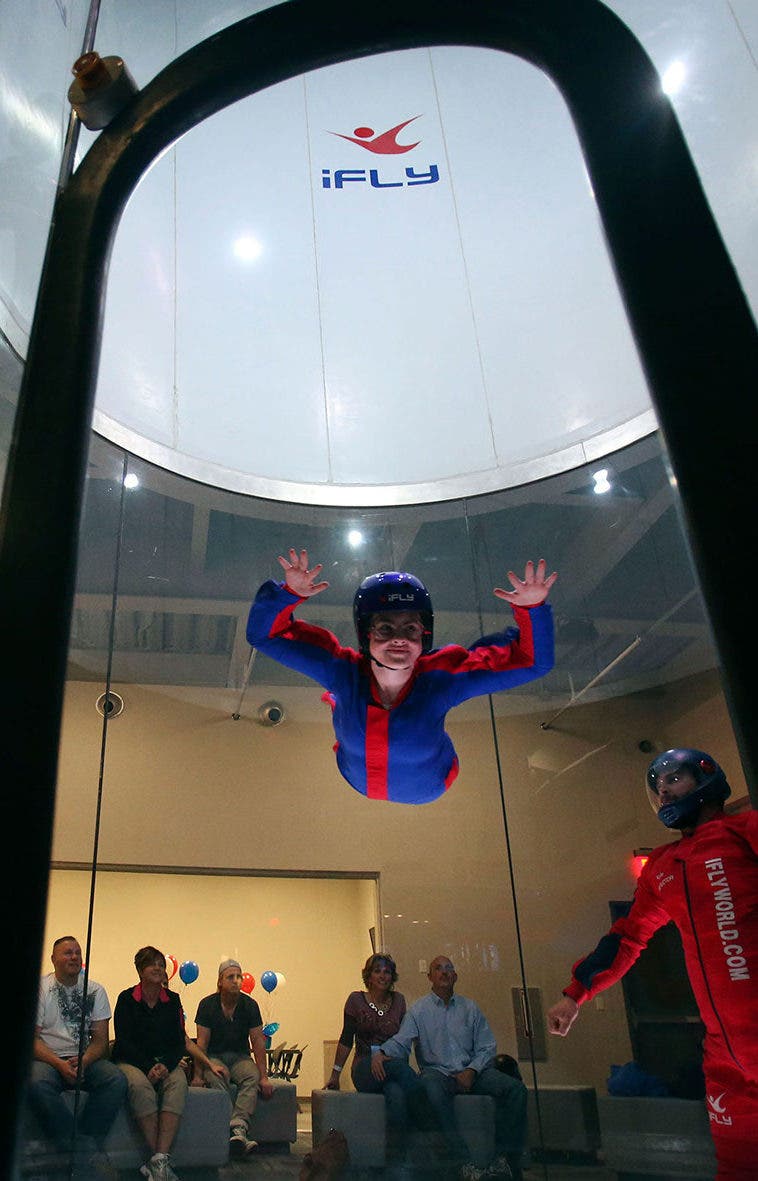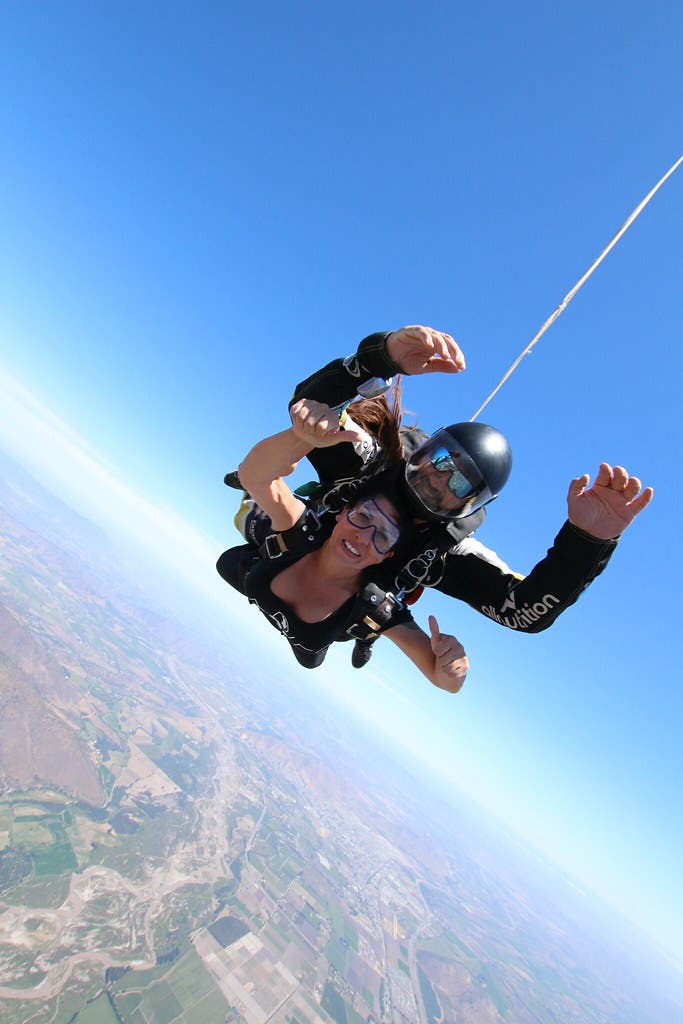Are you scared of jumping out of a plane and falling from the sky at 130mph? Well we can’t blame you, and in fact we can offer you a good alternative! Indoor skydiving has become a fast growing modern trend and is a perfect option for those who have an extreme fear of heights. Indoor skydiving is essentially a vertical wind tunnel with air running through at high speeds. The wind speed within the tunnel is high enough to support your weight and lets you float in the air.


But Does Indoor Skydiving Feel Like The Real Thing?
Yes and no! Indoor skydiving simply replicates the free fall portion of a traditional skydive. It even allows you to experience the sensation of the free fall for longer periods of time. What used to take thousands of jumps, can now be accomplished in just a few sessions! In fact, practicing in a wind tunnel before attempting an outdoor skydive can help you learn how to fly your own body with control. We have listed some main differences between indoor and outdoor skydiving below, so read ahead to find out more.
What Are the Differences Between Skydiving and Indoor Skydiving?
Altitude
For those with a crippling fear of heights, you won't need to fly 10,000-13,000 feet in the air to experience indoor skydiving! Participates can simply enter the wind tunnel chamber and lay on the wind by leaning forward. Then the high wind speeds will allow you to float in midair. The trick is to learn how to control your body in the air so that you can turn, as well as move up and down within the tunnel.
Parachute
Parachutes are not necessary with indoor skydiving. So you won’t be able to experience the canopy ride down. On most skydives, you will be strapped to a professional instructor who will help maneuver the parachute. All you have to do is relax and enjoy the beautiful view as you float down to earth.
Weather
Bad weather? No such thing with Indoor skydiving facilities! They are not affected by the weather conditions and can run anytime, day or night and year round. With outdoor skydiving there are drop zones that regulate weather conditions such as wind, clouds, and temperature. Bad weather can ruin your scheduled flight and inevitably lead to disappointment.
Age
Indoor skydiving is a great option for people of all ages. Many facilities have no upper age limit, so kids as young as 3 to adults over the age of 100 can all participate. With outdoor skydiving, participants must be over the age of 18 and under 220lb for health and safety reasons.
Going Solo
With indoor skydiving, even first timers can fly solo and experience how it feels to fly their own bodies. Most outdoor skydiving facilities will require your jumps to be tandem, which means you will be attached to an experienced instructor. Participants who wish to jump solo must enroll in the 7 level AFF program.
Ready to Fly?
So now that you have educated yourself on the difference between indoor and outdoor skydiving, which one will you attempt? After you're done, let us know how your experience was on our social media! If you are looking to skydive locally, we have compiled a list of top places to skydive in San Diego. Or if you are wondering how to prepare for skydiving, we also have some tips to offer.
